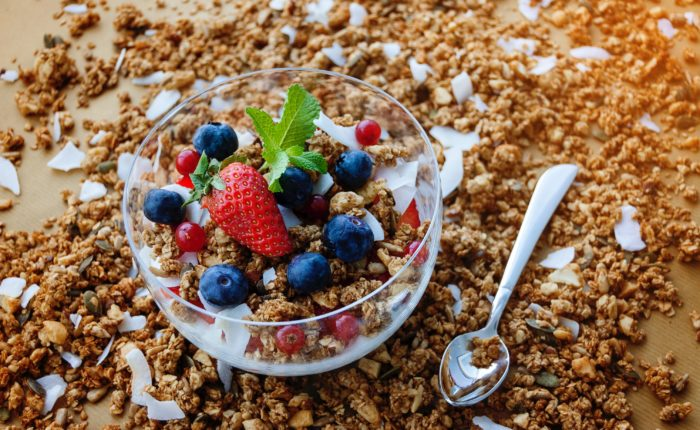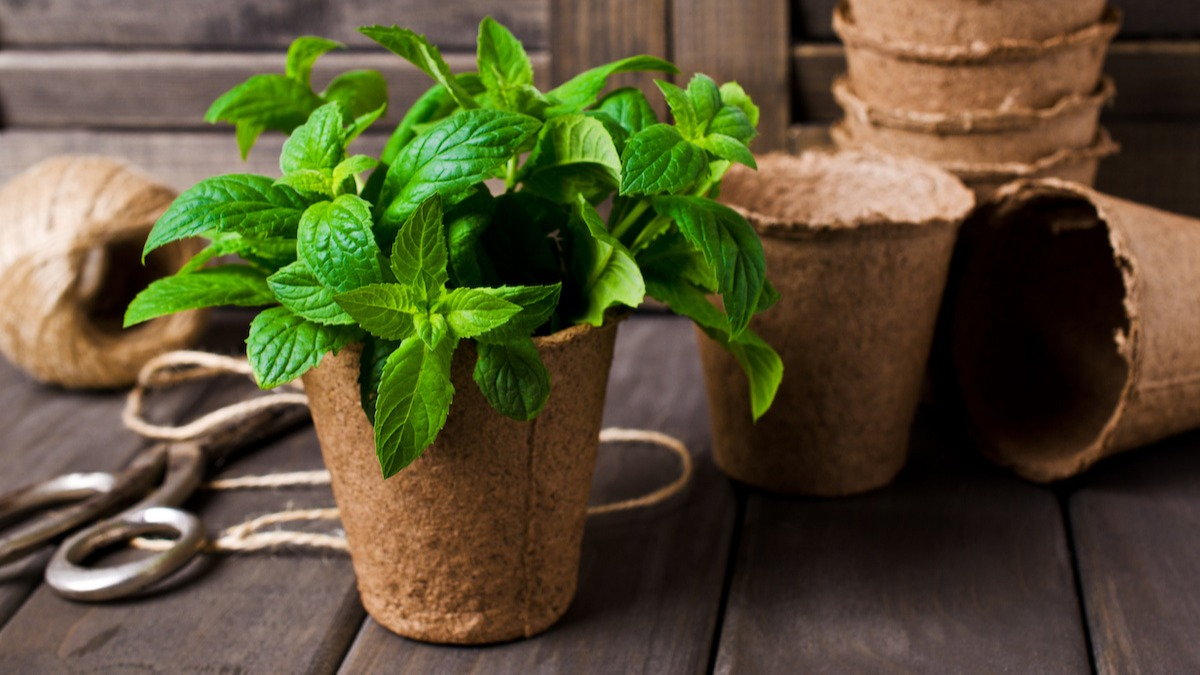
All herbs of the mint genus have culinary uses and the cultural background they come from. Whether we are talking about spearmint, mint, or any blend of chocolate mint or apple mint, you can enjoy fresh mint all year round. However, suppose you live in a home without a garden, or that you have mobility problems and gardening is difficult. There is a solution. Growing mint indoors is a more convenient way to try gardening.
Peppermint (the taxonomic mint) herb garden is lush, full of pleasant aroma, and prolific. Some people who grow outdoor mint will soon remove it because it takes over! You can grow mint plants indoors and harvest them from your herb garden throughout the year. Mint leaves can be used to make delicious teas, meat marinades, and even homemade cosmetics. Peppermint can tolerate many extreme conditions and will continue to produce leaves even under stress.
If you are not familiar with indoor planting, don't be afraid! Peppermint is an herb that will not disappoint. Whether you want to grow mint in a herb garden on your balcony or in a more complex environment (such as a hydroponic system), you will find these plants are elastic, pleasant and fast-growing. Under the right growing conditions, you will have mint all year round.
For those who grow mint indoors, one benefit is that they can avoid the risk of growing a somewhat invasive herb in the garden. I planted mint in an outside container, and somehow it managed to enter a nearby bed. If I don’t spend a lot of time harvesting it, it will take over. Therefore, growing mint indoors is a way to avoid spoiling the hard work you do on earth. This is an ecological gardening practice!
Ways to grow mint indoors
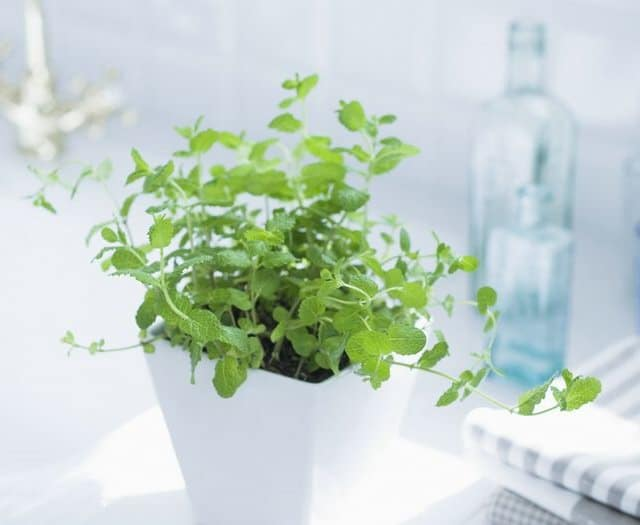
Plant mint on indoor windowsills or closed balconies with plenty of direct sunlight. If there are no obstacles in nearby trees or buildings, your mint plants will thrive. However, if the sun is blocked, you may find it more difficult to grow mint in this way.
If your windows are not facing the right direction or cannot get enough sunlight, planting lights can help your mint flourish. Move your container to a nearby area where you can insert a fluorescent growth lamp. Fluorescent lights need to be turned on for at least 12 hours to grow mint indoors. Many plant lights have a timer, but some may require manual operation. Find the product that best suits your needs and mint plant needs.
For those who want to grow mint indoors, planting tents is another option. Because of their abilities, they may even be the best choice for indoor planting. Using a planting tent, you can not only control the heat and light around the mint plant, but also the humidity. This is a huge advantage because peppermint enjoys high humidity. Planting tents are suitable for those who have space to accommodate them. Smaller growing tents start with dimensions of 2 feet x 2 feet x 4 feet.
Peppermint is also suitable for growing in indoor hydroponic systems. In the past, it was thought that herbs grown in hydroponic systems were not as flavorful as herbs grown in soil. However, progress has been made in hydroponics technology that can provide herbs with proper nutrition, resulting in a rich flavor. Therefore, this is an option for people who have at least a few feet of counter space.
There are many options, including a fish and vegetable symbiosis system about the size of a small aquarium. However, peppermint tends to absorb nutrients from soil and water, so care needs to be taken in this regard. Whether you choose to grow in a container or in a system, mint plants can grow well even if they are neglected.
Take care of indoor mint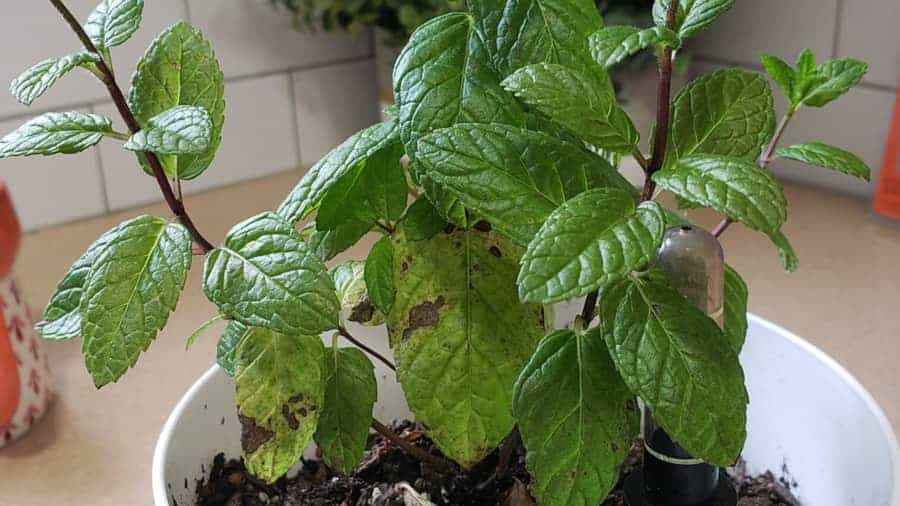
So what does it take to grow mint indoors? Since peppermint is a non-critical herb, only a few simple things can help you get from point A to point B.
Lighting and temperature
Mint plants need at least 6 hours of direct sunlight every day. As mentioned above, fluorescent lights should be lit on mint plants for at least 12 hours a day. In the northern hemisphere, south-facing windows will provide full-spectrum sunlight, while north-facing windows in the southern hemisphere will provide the same sunlight. To prevent your plants from getting too much shade from the sun, please rotate frequently in two settings: direct sunlight and grow lights. This will also strengthen the roots of the mint plant.
Fluorescent lights usually require some structure to hang above the mint plant, so you need to include it in your plan. They should also be hung near your plants to mimic members of the mint family that are usually needed. When you decide which model to buy, consider the amount of space you need.
If your space is small, a light bulb can solve the problem. If there is room to unfold, the approximately four-foot-long setting will do wonders for your plants. Planting tents and hydroponic systems have lights, so please follow the specific instructions for the system to provide enough light for your thinking plants.
Mint likes the temperature range between 55 degrees and 70 degrees Fahrenheit. Growing mint indoors is a good solution because most households are in this temperature range.
Mint often thrives through negligence, but indoors, you need to pay close attention to your HVAC system. Try not to place any containers or devices near the outlet of the air conditioner, because the heater can quickly and easily dry the mint soil. Dry and cold air can cause root rot.
Water and humidity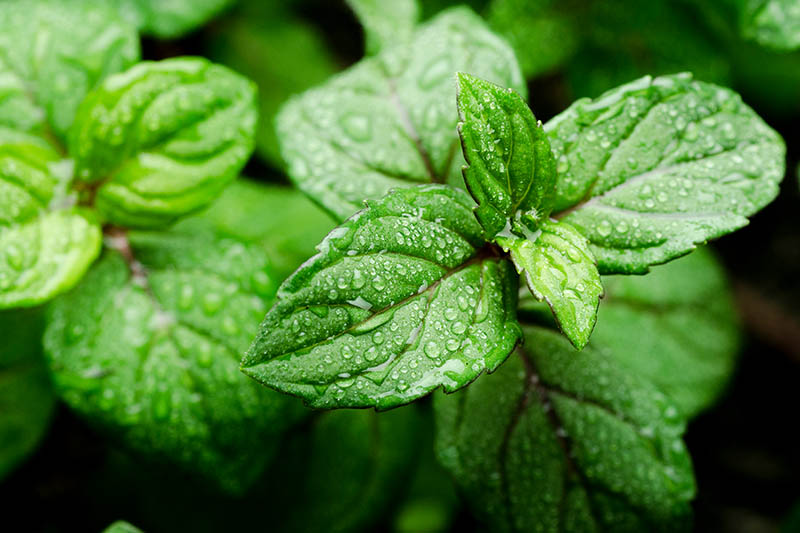
Peppermint is easy to grow, and it is difficult to overwater or overwater. However, if left in too moist soil, mint can cause damage to its roots. Peppermint can also be damaged by being too dry.When the pot feels underweight due to lack of moisture, it's time to water the mint.
On the windowsill, you will find that direct sunlight evaporates water faster than other methods. Just check your pot once or twice a week to make sure there is no time for watering. Then take the container to your sink and rinse with water. Leave it in the sink without a drip tray below to drain the excess water, then put it back on the window sill.
Peppermint is a plant with high humidity. So between watering, lightly spray the leaves with a spray bottle. You can also place the container on a plate of pebbles immersed in water, which will provide ambient humidity when the water evaporates. If you water enough, this is not necessary.
Planting tents and hydroponics will provide sufficient humidity and no additional watering is required. Try to keep the humidity above 40%.You will change the water in the hydroponic system at the same frequency: every 5-7 days.
Growth medium and container
For indoor mint planting, plant the mint in good quality potting soil, the size of the pot is large enough to hold the extra growth of the mint plant. A diameter of at least 8 inches and a depth of at least 12 inches will accommodate a happy indoor mint plant. Make sure your pot has a fairly large drain hole. Automatic watering pots are suitable for mint, especially when you find that the soil quickly dries out between waterings.
For those who want to grow in soilless media instead of soil, there are some solutions. Planting mint in a homogeneous mixture of vermiculite, perlite and peat moss works well. For those who do not want to eat sphagnum moss, coconut husks are also effective. You can try this in a container, or you can start with the coconut shell fiber starting pellets and then transfer them to the pot.
In hydroponics, you can grow lightweight expanded clay aggregates to transfer water to pockets that can be absorbed by mint plants. The advantage of LECA is that it is reasonably priced compared to coconut coir or even some potting soil.
The conclusion drawn from all this is that you need to drain the mint well. It doesn't mind moist soil, but it prefers slightly dry soil between watering with sufficient moisture. However, you don't have to make a fuss, because even indoors, mint can be done with regular water and light.
Fertilize
You don't necessarily need to fertilize indoor mint plants. However, peppermint does benefit from applying liquid fertilizer every three weeks in the warm season and every six weeks in the winter. In the hydroponic system, use high-nitrogen liquid fertilizer, and adjust the pH value of the nutrient solution as needed after adding the fertilizer. The same schedule applies to containers.
Pruning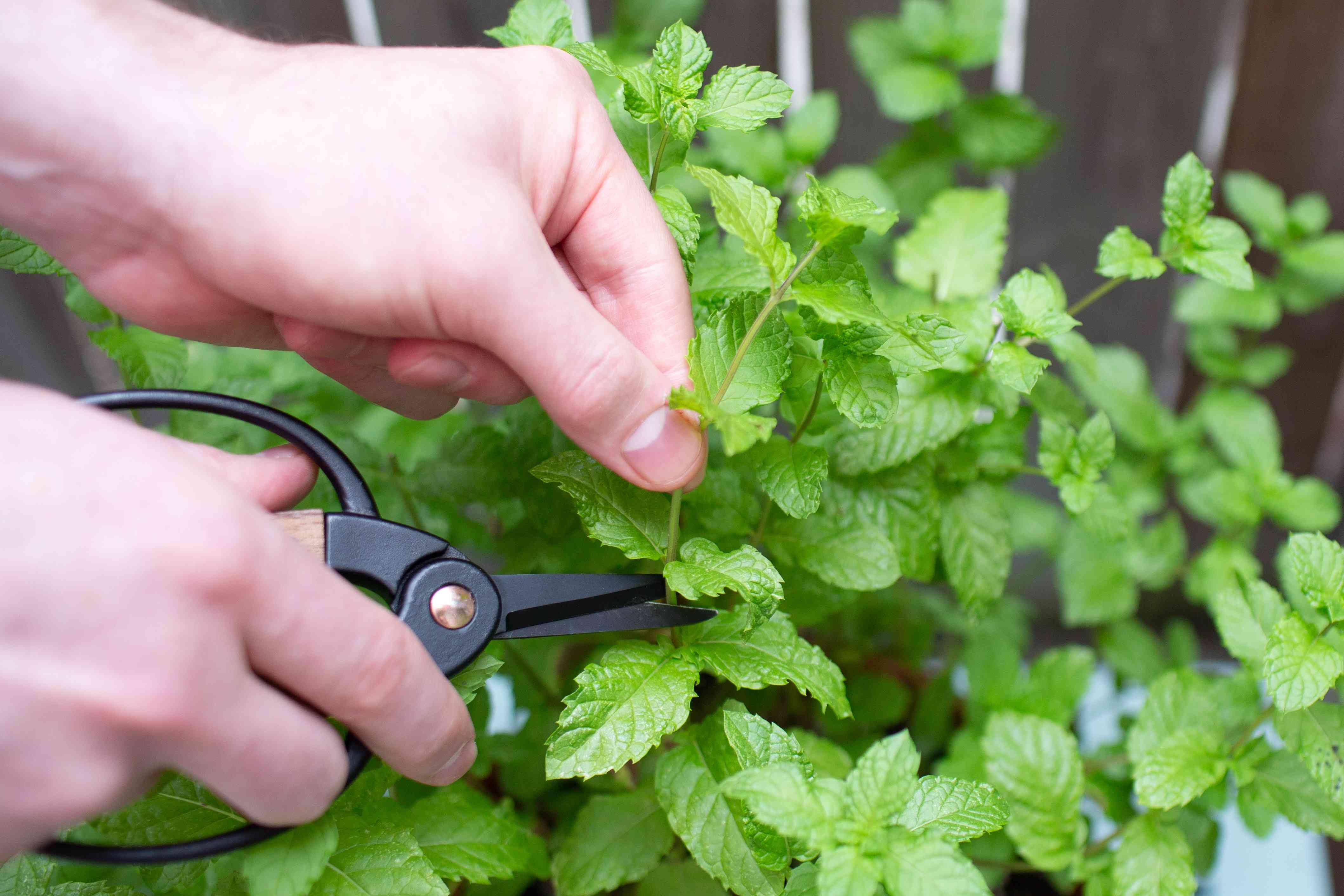
All aromatic herbs-including mint-like a good prune. Pruning the leaves of all mint varieties will promote more growth, resulting in more mint leaves. Do we have enough mints? Never!
To prune, just cut or break a few leaves on the top of the plant before the next growth point. The two leaves grow on each side of the mint stem. It is best to trim cuttings that are at least a few inches long to avoid cutting stems that are too young.
When growing indoors, mint blooms the same requirements as outdoors. Pluck the flowers to prevent the transfer of nutrients to flower production. Cut off the flower growth at the top of the plant before the first growth point.
It is sometimes good to provide flowers to pollinators outdoors, but since you want bees to be outdoors rather than indoors, there is no need here. The flowers also allow mint plants to go to seed and reproduce.
Planting
Indoor mint planting can initially be done through seeds or cuttings-basically harvesting mint. You can plant the seeds in the soil of a pot or container and wait for them to germinate. Try to keep a few seeds in each container, because mint will grow quickly and take over.
Each bud needs about two feet of distance to thrive, so make sure you plant far enough away. For most containers, this means that only one plant can live there.
You can try several different types of mint here. Try growing spearmint and apple mint in your Piperita. Try not to fill each container with too many seeds. Give your mint seeds light because they need it to germinate.
Start seeding in rooting plugs used in hydroponic systems. In both containers and hydroponics, it takes one to two weeks for the seeds to germinate. You need to keep the soil moist and keep the temperature at around 70 degrees Fahrenheit. Once you see the roots protruding from under the plug and the seedlings are at least a few inches tall, you can grow any mint species you choose in the system.
It is also easy to propagate mint from established plants. It is also faster than growing from seed. Harvest the mint stems of the established plants above the woody part and stick to the fresh green part of the stem. Then immerse these cuttings in a cup filled with water and avoid direct sunlight. In a week or so, healthy white roots will grow into the water, and the stems can be planted in the soil or used for hydroponic cultivation.
You can skip the watering step, soak the harvested cuttings in rooting hormone, and then put them directly into the soil. Within a week, you will have a new mint plant.
Troubleshooting
Fortunately, the menthol chemical of most peppermint plants can prevent many pests, which is why many people choose peppermint gardening. In indoor planting, it is easier to track your plants and make sure everything goes according to plan.
Uneven humidity in the soil or growing medium and uneven humidity are usually key issues that people have to deal with when growing herbs (such as mint) indoors. Different varieties have different specific requirements, but in general, mint prefers high humidity and evenly moist soil.
If the soil is still too dry, add water. Too dry will cause the green leaves to brown and impair the taste of mint. In hydroponics, keep the nutrient solution fresh and provide the required care for mint.
As the mint matures, the stems will turn brown, but if you notice premature browning, mushy stems, and lack of growth, it may be a problem with excessive watering. This may also be related to fungal root rot, which, if not controlled, can damage the entire mint plant and eventually kill it.
If you water on your head, you can create the best conditions for the peppermint rust fungus, which can host any kind of peppermint. Water the roots properly to prevent this.
The best conditions for fungi can provide the best conditions for fungal mosquitoes. These pests can cause damage to the roots of mint in a more severe infection. To remove fungal mosquitoes from your plants, set up an apple cider vinegar trap. Pour a little ACV into a small cup, add some soap, and cover with plastic wrap. Just poke a few holes in the plastic. Gnats will eat ACV, and soap will prevent them from leaving the trap. When all the mosquitoes have been wiped out, dispose of the trap.
Too little light or too much indirect light can cause green leaves to brown and yellow, or stretch toward the light source. Mint plants do not like too much shadow or indirect light. If your mint plant lacks light, remove the browned leaves and adjust your lighting plan. If you use window sills for mint gardening, you may need to purchase grow lights to eliminate excess shadows.



